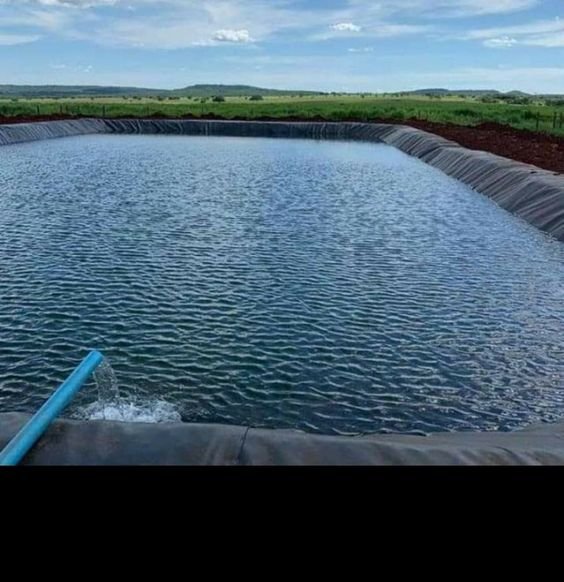Fishing Vessel Investment: Comprehensive Guide to Maximizing Returns and Benefits
Fishing vessel investment is an integral aspect of the maritime industry, encompassing the acquisition, maintenance, and operation of boats designed for commercial and recreational fishing. As global seafood consumption continues to rise, the fishing sector is evolving rapidly, presenting new opportunities for investors. This guide provides an in-depth look into fishing vessel investment, exploring its benefits, goals, ideas, topic suggestions, and advantages.
Whether you’re a prospective investor, a current vessel owner looking to modernize, or someone with an interest in maritime investments, this comprehensive guide will equip you with the knowledge needed to navigate the world of fishing vessel investment effectively.
Benefits of Fishing Vessel Investment
1. Profit Potential
The fishing industry offers significant profit potential due to the growing global demand for seafood. Investing in fishing vessels enables investors to participate in this lucrative market, with opportunities to earn substantial returns. As seafood consumption increases and markets expand, well-managed fishing operations can lead to impressive financial gains.
2. Technological Advancements
Modern fishing vessels come equipped with advanced technology that enhances operational efficiency. Innovations such as high-resolution sonar systems, automated fishing gear, and sophisticated GPS navigation contribute to improved catch rates and reduced operational costs. Investing in vessels with cutting-edge technology ensures that you stay competitive in a rapidly evolving industry.
3. Market Expansion
Investing in fishing vessels can facilitate market expansion. With a modern fleet, investors can explore new geographic areas and target different species, broadening their market reach. This flexibility allows for diversification of product offerings and access to new consumer segments, potentially increasing revenue streams.
4. Job Creation
Fishing vessel investment plays a crucial role in job creation, particularly in coastal communities. New vessels require skilled crew members, technicians, and support staff, contributing to local employment and economic development. By investing in fishing vessels, you support the livelihoods of individuals and families in these communities.
5. Sustainability
Sustainability is becoming increasingly important in the fishing industry. Investing in newer, more efficient vessels supports sustainable fishing practices by reducing environmental impact, minimizing bycatch, and adhering to regulatory standards. This commitment to sustainability helps preserve marine ecosystems and ensures the long-term viability of fishing operations.
6. Enhanced Safety and Compliance
Modern fishing vessels are designed with advanced safety features and comply with the latest regulatory standards. Investing in these vessels ensures that your operations meet safety and compliance requirements, reducing the risk of accidents and legal issues. Enhanced safety measures also protect crew members and contribute to overall operational efficiency.

Financing and Budgeting
Proper financing and budgeting are crucial for successful fishing vessel investment. Consider the following aspects:
- Acquisition Costs: Determine the cost of purchasing or leasing fishing vessels. This includes the initial investment as well as any additional expenses for equipment, technology, and modifications.
- Operating Costs: Budget for ongoing operating costs such as fuel, maintenance, crew salaries, and insurance. Accurate budgeting helps manage expenses and ensures financial stability.
- Financing Options: Explore different financing options, including loans, grants, and investor partnerships. Assess the terms and conditions of each option to find the most suitable financing solution for your investment.
Goals of Fishing Vessel Investment
1. Maximize Return on Investment (ROI)
Achieving a high return on investment is a primary goal for fishing vessel investors. This involves making strategic decisions regarding vessel acquisition, maintenance, and operations to ensure that the investment generates substantial profits over time. Effective financial planning and market analysis are essential for maximizing ROI.
2. Enhance Operational Efficiency
Investors aim to enhance the operational efficiency of their fishing vessels. This includes optimizing fuel consumption, improving catch rates, and reducing maintenance costs. By focusing on operational efficiency, investors can lower expenses and increase overall profitability.
3. Expand Market Reach
Expanding market reach is a key goal of fishing vessel investment. Modern vessels enable investors to access new markets, target diverse species, and explore international opportunities. By broadening market reach, investors can tap into growing consumer demand and increase revenue potential.
4. Support Sustainable Practices
Many investors prioritize supporting sustainable fishing practices. Investing in vessels designed with environmental considerations in mind helps reduce the ecological footprint of fishing operations. This goal aligns with global efforts to promote responsible fishing and protect marine resources for future generations.
5. Upgrade Fleet Capabilities
Upgrading existing fleets with newer, more advanced vessels is a common goal. Modern vessels offer improved technology, greater efficiency, and enhanced performance. By investing in fleet upgrades, investors can stay competitive and meet evolving industry standards.
6. Improve Safety and Compliance
Improving safety and compliance is crucial for successful fishing vessel investment. Modern vessels equipped with the latest safety features and regulatory compliance measures help ensure smooth operations and protect crew members. This goal contributes to overall operational success and risk management.
Ideas for Fishing Vessel Investment
1. Technology Integration
Integrating advanced technologies into fishing vessels can significantly enhance their efficiency and productivity. Consider investing in vessels equipped with high-resolution sonar systems, automated fishing gear, and real-time data analytics. These technologies improve catch rates, reduce operational costs, and streamline fishing operations.
2. Fleet Expansion
Expanding your fleet can increase fishing capacity and market reach. Evaluate opportunities to acquire additional vessels or upgrade existing ones to meet growing demand and diversify fishing operations. Fleet expansion allows for increased production and access to new markets.
3. Sustainable Design
Investing in vessels designed with sustainability in mind can provide long-term benefits. Look for vessels that incorporate eco-friendly technologies, such as energy-efficient engines, waste management systems, and low-emission technologies. Sustainable design reduces environmental impact and supports responsible fishing practices.
4. Partnerships and Joint Ventures
Forming partnerships or joint ventures with other investors or fishing companies can enhance the effectiveness of your investment. Collaborations provide access to additional resources, expertise, and market opportunities. Joint ventures can also facilitate shared risk and cost management.
5. Training and Development
Invest in crew training and development programs to ensure that your team is skilled in operating advanced fishing vessels. Proper training improves safety, efficiency, and overall performance. Skilled crew members contribute to the success of fishing operations and the achievement of investment goals.
6. Innovation and Research
Explore opportunities for innovation and research in the fishing industry. Investing in research and development can lead to the discovery of new fishing techniques, improved vessel designs, and enhanced operational strategies. Staying at the forefront of industry innovation can provide a competitive edge and drive long-term success.
7. Maintenance and Upgrades
Regular maintenance and upgrades are essential for ensuring the longevity and performance of fishing vessels. Implement a comprehensive maintenance program to address potential issues and keep vessels in optimal condition. Upgrading equipment and technology periodically can also enhance operational efficiency and safety.

Topic Suggestions for Further Exploration
1. Regulatory Compliance and Best Practices
Investigate the regulatory landscape for fishing vessels, including licensing requirements, safety standards, and environmental regulations. Understanding and adhering to these regulations is crucial for successful investment and operational compliance.
2. Market Trends and Demand Analysis
Analyze current market trends and demand patterns in the seafood industry. Investigating market dynamics, consumer preferences, and emerging trends can help investors make informed decisions and identify lucrative opportunities.
3. Financial Planning and Risk Management
Develop strategies for financial planning and risk management in fishing vessel investment. This includes budgeting for vessel acquisition, maintenance, and operational costs, as well as identifying and mitigating potential risks.
4. Case Studies of Successful Investments
Examine case studies of successful fishing vessel investments to gain insights into best practices, strategies, and lessons learned. Real-world examples can provide valuable guidance and inspiration for potential investors.
5. Future Innovations in Fishing Technology
Research emerging technologies and innovations in the fishing industry. Staying informed about advancements in vessel design, fishing gear, and operational techniques can help investors stay ahead of the curve and capitalize on new opportunities.
6. Economic and Environmental Impact Assessment
Conduct assessments of the economic and environmental impacts of fishing vessel investments. Understanding the broader implications of your investment can help ensure that it aligns with sustainability goals and contributes positively to local economies and ecosystems.
7. Investment Strategies for Different Types of Fishing Operations
Explore investment strategies tailored to different types of fishing operations, such as commercial, recreational, or aquaculture. Each type of operation may have unique requirements and opportunities, and understanding these differences can help optimize investment outcomes.
Market Entry Strategies
Developing effective market entry strategies can enhance the success of fishing vessel investment. Consider the following strategies:
- Branding and Marketing: Establish a strong brand and marketing strategy to differentiate your seafood products in the market. Highlight unique selling points and quality attributes to attract customers.
- Distribution Channels: Identify and develop distribution channels for reaching target markets. This may include partnerships with distributors, wholesalers, and retailers.
- Product Diversification: Explore opportunities for product diversification, such as offering processed seafood products or value-added services. Diversification can create additional revenue streams and appeal to a broader customer base.
Regulatory Compliance
Compliance with regulations is essential for operating fishing vessels legally and sustainably. Key regulatory considerations include:
- Licensing and Permits: Ensure that the vessel is licensed and that all necessary permits are obtained for fishing operations. Regulatory requirements vary by region and fishing method.
- Safety Standards: Adhere to safety standards for vessel construction, equipment, and crew safety. Compliance with safety regulations helps prevent accidents and ensures a safe working environment.
- Environmental Regulations: Follow environmental regulations related to bycatch reduction, waste management, and conservation practices. Compliance with these regulations supports sustainable fishing practices and protects marine ecosystems.
Assessing Market Demand
Before investing in fishing vessels, it’s essential to assess market demand for various seafood products. Market analysis involves studying consumer preferences, market trends, and regional demands. Key factors to consider include:
- Consumer Preferences: Understanding what types of seafood are in demand in different regions can guide investment decisions. For example, certain markets may have higher demand for specific fish species or processed seafood products.
- Price Fluctuations: Seafood prices can fluctuate based on supply and demand, seasonal variations, and market conditions. Analyzing price trends can help investors anticipate market changes and plan accordingly.
- Competitive Landscape: Evaluate the level of competition in the seafood market. Understanding the competitive environment can help investors identify opportunities and differentiate their offerings.

Advantages of Fishing Vessel Investment
1. Increased Revenue Potential
Fishing vessel investment offers the potential for increased revenue through commercial fishing activities. With a well-managed fleet and effective operational strategies, investors can capitalize on the growing demand for seafood and achieve substantial financial returns.
2. Access to Advanced Technologies
Investing in modern fishing vessels provides access to advanced technologies that enhance operational efficiency. Cutting-edge equipment, such as high-resolution sonar systems and automated fishing gear, improves catch rates, reduces costs, and streamlines operations.
3. Diversification Opportunities
Fishing vessel investment allows for diversification within the maritime industry. By exploring different fishing methods, targeting various species, and entering new markets, investors can mitigate risks and create multiple revenue streams.
4. Positive Environmental Impact
Investing in vessels designed with sustainability in mind contributes to a positive environmental impact. Modern vessels often feature energy-efficient technologies and environmentally friendly practices, supporting responsible fishing and minimizing ecological harm.
5. Support for Local Economies
Fishing vessel investment supports local economies by creating jobs and stimulating economic activity in coastal communities. This investment can lead to improved infrastructure, services, and overall quality of life in these areas.
6. Long-Term Asset Value
Fishing vessels are valuable assets that can appreciate over time. Well-maintained and technologically advanced vessels can retain their value and provide long-term returns on investment. Regular upgrades and proper maintenance contribute to maintaining asset value.
7. Contribution to Food Security
Investing in fishing vessels contributes to global food security by supporting the seafood supply chain. Reliable and efficient fishing operations help meet the growing demand for seafood and ensure a steady supply of nutritious food for consumers.
Fishing vessel investment presents a range of opportunities and benefits for investors in the maritime industry. By understanding the goals, benefits, and ideas associated with this investment, potential investors can make informed decisions and achieve success in the fishing sector.The advantages of investing in fishing vessels include increased revenue potential, access to advanced technologies, diversification opportunities, and positive environmental impact. Additionally, investing in fishing vessels supports local economies, contributes to food security, and offers long-term asset value.To maximize the value of fishing vessel investments, investors should explore topics such as regulatory compliance, market trends, financial planning, and future innovations. By staying informed and making strategic decisions, investors can navigate the dynamic world of fishing vessel investment and achieve sustainable success in the maritime industry.





